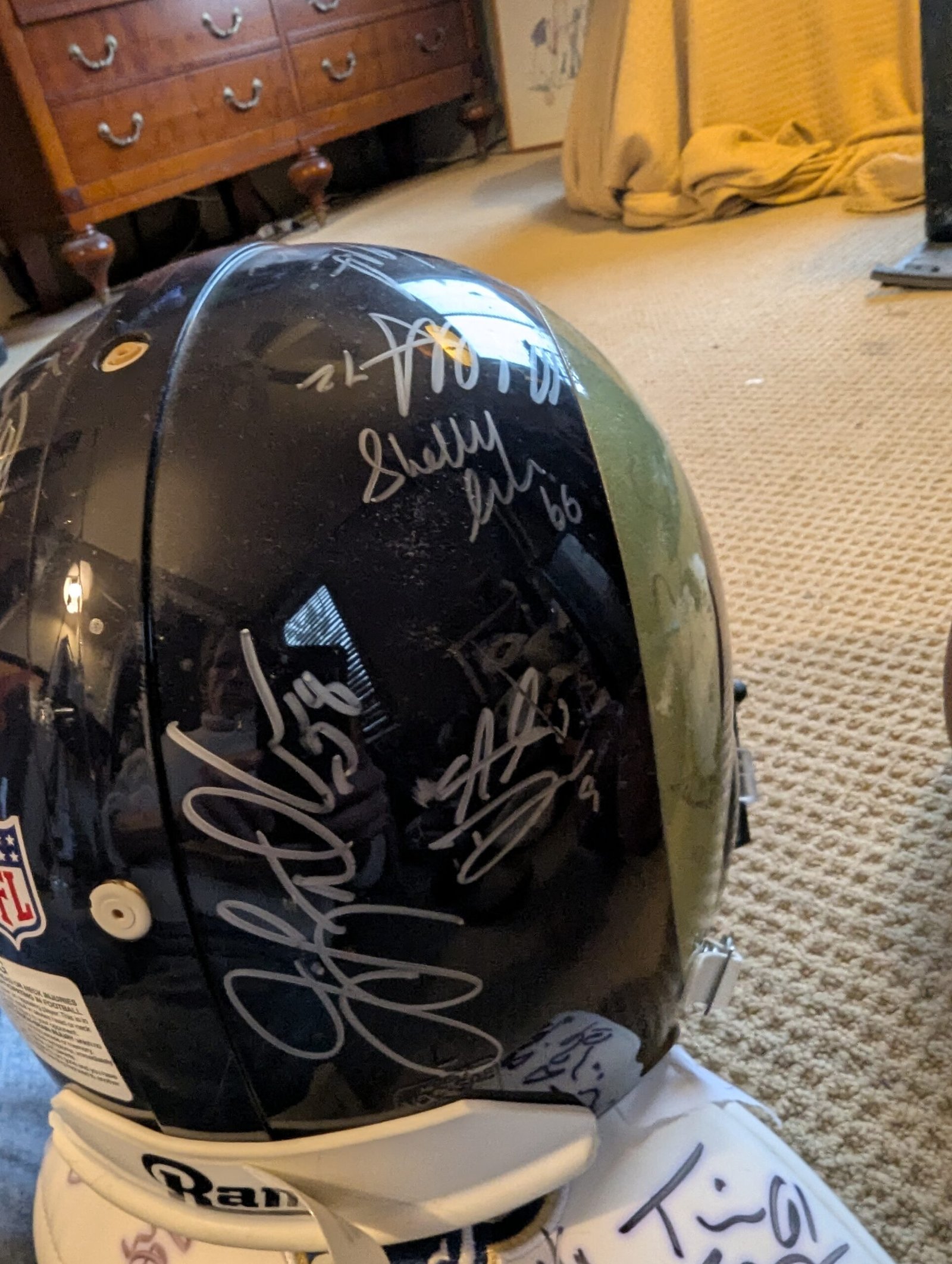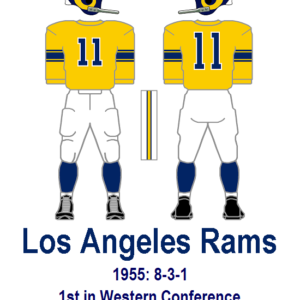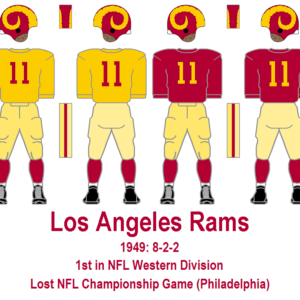Description
he 2014 St. Louis Rams had another frustrating season, finishing with a 6-10 record. While they showed some flashes of brilliance, particularly on defense, the team struggled with consistency and key injuries, particularly at the quarterback position. Head coach Jeff Fisher and his staff faced the challenge of developing young talent and trying to compete in a tough NFC West division.
















Here are some key points about the 2014 St. Louis Rams:
1. Head Coach: Jeff Fisher
- Jeff Fisher was in his third year as head coach, and while the team showed improvements in some areas, they still couldn’t break through to a winning record. Fisher’s coaching philosophy, which focused on a strong defense and a balanced running game, was evident, but the offense continued to be a major limitation.
2. Quarterback Situation
- The Rams struggled with consistency at quarterback. Sam Bradford, who had been the starting quarterback for several years, tore his ACL during the preseason (for the second time in two years), ending his season before it even started.
- In place of Bradford, the Rams used Shaun Hill as the starting quarterback for most of the season. Hill was serviceable but not a long-term answer. He threw for 1,886 yards, 9 touchdowns, and 5 interceptions in 11 games.
- Austin Davis also started several games, throwing for 2,001 yards, 12 touchdowns, and 9 interceptions. Davis showed some promise but was inconsistent and prone to mistakes.
- The Rams’ inability to settle on a starting quarterback and the lack of an elite playmaker under center continued to hold back the offense.
3. Offense:
- Zac Stacy, the team’s leading rusher from 2013, was no longer the focal point of the offense in 2014. He was replaced by Tre Mason, a rookie running back who had a solid season, rushing for 765 yards and 4 touchdowns.
- The Rams’ running game was solid, but they lacked a truly dominant back to take the offense to the next level.
- Tavon Austin showed flashes of his potential as a dynamic playmaker. He finished the season with 47 receptions for 473 yards and 5 touchdowns, and also contributed in the running game and on special teams, showcasing his versatility.
- The Rams’ offensive line was average, but there were some struggles in pass protection, which further hurt the offense’s efficiency. Greg Robinson, the second overall pick in the 2014 NFL Draft, was a key part of the offensive line but had growing pains as a rookie.
4. Defense:
- The Rams’ defense was once again one of the best in the league. The defensive line, in particular, was dominant. The Rams finished the season with 44 sacks, ranking among the top teams in the league.
- Robert Quinn continued to shine as one of the league’s premier pass rushers, finishing with 10.5 sacks and earning his second Pro Bowl selection.
- Chris Long, despite battling injuries, still had a solid presence on the line, and Aaron Donald, a rookie defensive tackle, quickly made a name for himself. Donald had a remarkable first season, recording 9 sacks and establishing himself as one of the top defensive tackles in the league.
- James Laurinaitis, the leader of the defense, continued to be a solid performer at linebacker, recording 134 tackles.
- The secondary remained a weak point. While Janoris Jenkins had some solid moments, the Rams still struggled with consistency in coverage.
5. Special Teams:
- Johnny Hekker continued to be one of the top punters in the NFL, earning his second straight Pro Bowl selection. His ability to pin opponents deep in their territory was critical for the Rams’ defense.
- Greg Zuerlein, the kicker, had an inconsistent year, missing some key field goals. He finished with 24 field goals made out of 30 attempts, but his performance was uneven at times.
- Tavon Austin also contributed significantly on special teams as a returner, making explosive plays when given the opportunity.
6. Key Games:
- Win over Seattle Seahawks (Week 7): The Rams pulled off a big win over the defending NFC champion Seattle Seahawks, defeating them 28-26. This win highlighted the Rams’ ability to compete with elite teams when everything clicked, especially on defense.
- Win over Denver Broncos (Week 11): The Rams shocked the Denver Broncos by defeating them 22-7. The defense was dominant in this game, intercepting Peyton Manning twice and sacking him three times.
- Losses to inferior teams: Unfortunately, the Rams also dropped games they were expected to win, including losses to teams like the Minnesota Vikings and San Diego Chargers. These inconsistent performances were part of the reason the Rams finished with a losing record.
7. Draft and Roster Moves:
- The Rams had a strong draft in 2014, highlighted by the selection of Aaron Donald (DT) in the first round. Donald quickly became a force on the defensive line, making an immediate impact and earning Defensive Rookie of the Year honors.
- Greg Robinson, the Rams’ second overall pick in the draft, was a work in progress but showed promise as a starting offensive tackle.
- The Rams also added depth with players like Lamarcus Joyner (CB), though the secondary still had issues.
8. Overall Outlook:
- The 2014 season showed that the Rams had a strong defense and some potential on offense, but they remained held back by the quarterback position and inconsistency.
- With a 6-10 record, the Rams were clearly not a playoff team, but they were competitive in a tough NFC West division, which featured the Super Bowl champion Seattle Seahawks and the rising Arizona Cardinals.
- Looking ahead, the Rams’ defense was one of the best in the NFL, and with the right improvements at quarterback and on offense, the team could become a playoff contender in the coming years.
In conclusion, the 2014 St. Louis Rams had a solid defense and some promising individual performances, but they struggled with quarterback play and offensive consistency. The season was another step in the right direction for the team, but they still had significant hurdles to overcome before becoming a legitimate contender.
Head Coach: Jeff Fisher
|




